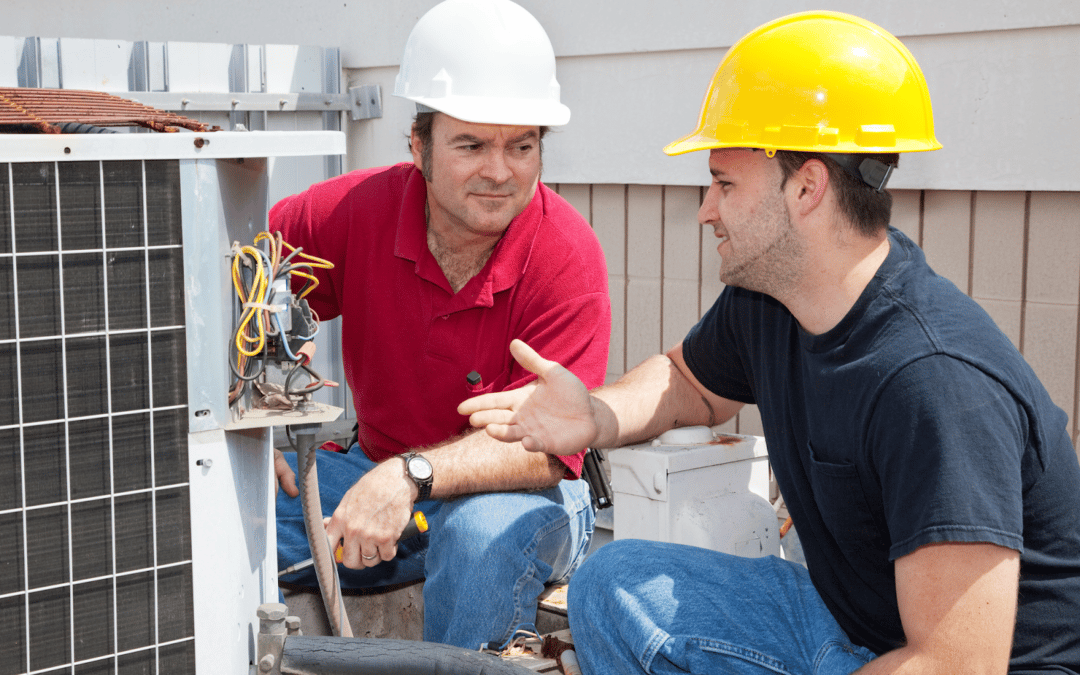When the chill of winter has worn off and the scorching heat of the Texas summer sets in, you need your air conditioner. So if you hear that telltale silence rather than the pleasant whir of your AC unit, your heart will sink and your brow will sweat from more than just the unbearable heat.
You need a new air conditioner.
But can you afford it? What does an outdoor HVAC unit cost anyway?
Keep reading to learn about the overall costs of a new HVAC unit and what factors affect your final installation bill.
Outdoor HVAC Unit Costs
Generally speaking, HVAC units will cost as low as $900 and as much as $9,000 installed. The variance in price depends on several factors.
For one, the size of the AC unit, as well as the size of your home, determines the price of the unit. Secondly, installation costs can vary.
The price of installation alone may tempt you to see if you can install your new HVAC unit by yourself. After all, labor costs are a big part of the overall cost of the entire project.
Do not install the HVAC unit on your own. Yes, you may save money upfront. However, you will most likely end up paying more in HVAC repair down the line because of your attempt at money-saving with the install.
Plus, HVAC technicians go to school and receive certification just to remove and install your units. Trust them and their expertise.
Factors that Affect the Cost of the Outside HVAC Unit
An outside HVAC unit cost depends on the brand of the unit as well as the size of the unit. As you begin to peruse HVAC units for sale, don’t just pick the cheapest unit.
You must begin first by looking at the square footage of your home.
Square Footage
HVAC package unit prices depend on your home size. Figure out how much square footage you will need to cool. Then you will need to do a little math.
Here are the numbers you need to know as you figure out what size AC you need:
- 1 ton of air conditioning capacity will cool 400 square feet of a home
- An air conditioner with 1 ton of air conditioning capacity will produce 12,000 BTUs for every 400 square feet it cools
Thus, if you have a 2,000 square-foot home, you need to divide your square footage by 400 square feet to determine the size of AC you will need. A 2,000 square-foot home will need a 5.0-ton air conditioner.
If you’re looking at BTUs, this means your 5.0-ton air conditioner will produce 60,000 BTUs, since every ton produces 12,000 BTUs.
Thus, if you have a 2,000 square-foot home, you want a 5.0 ton AC that produces 60,000 BTUs.
Don’t Go Big
You may be thinking that you should buy a bigger-than-necessary unit if you can afford it. After all, you don’t want an AC unit that’s too small and has to work harder than necessary. Plus, you want your home to be optimally cool.
With HVAC units, bigger isn’t better. You need a properly sized AC so that your unit runs as efficiently as possible.
If your unit is too big, it will cool your home quickly and run in short bursts. Whenever an AC unit runs, it turns on a little bit longer each time it turns on. When it is running longer, the extra time allows the unit to dehumidify your air.
So, when you have a unit that runs in short bursts, constantly turning on and off, you end up with a unit that does not adequately dehumidify your air. Plus, you’re putting unnecessary wear and tear on the unit by allowing it to start and stop more than it should.
SEER Rating
Your HVAC unit takes up approximately 46 percent of your home’s energy consumption. So it makes sense to try to find the most energy-efficient unit once it’s time for you to find a new outside AC unit.
The efficiency of an AC unit is determined by its SEER rating. SEER stands for Seasonal Energy Efficient Ratio. The higher the number, the more efficient your unit.
You can save significant money on your monthly energy bill with high-rated units. However, the unit itself as well as the installation will end up costing you more.
SEER ratings range from 13 at the lowest to 24 at the highest. A 13 to 14 SEER rated until will cost approximately $2500 to $3,000 for installation. A unit with a 24 SEER rating could end up costing more than $6,000 for installation.
Cost of Installation
Your installation costs take up a significant part of your overall costs. As you look at new units and the initial AC estimate, you have to consider a few other factors that could swell the final costs:
- Do you need a new furnace too? A qualified HVAC contractor will tell you if you need this at the same time.
- Do you need a permit from your county or city building department?
- Does your city or county require an inspection once you’ve installed the unit to make sure it’s up to code?
- Does your home have lead paint or asbestos? Testing for these as well as removing and replacing them will cost extra.
Also, beware of extremely low installation bids. These could signify a contractor without insurance or just a contractor desperate for work.
Also, how much experience does the contractor have? You want a contractor with significant experience and references to prove it. Ask around your community or look online for customer ratings.
Your HVAC unit is one of the biggest investments you’ll put into your home. It should last up to twenty years, so make sure you’ve hired an expert in the field.
Calculate and Commit
An outdoor HVAC unit cost depends on several factors. Once you’ve calculated the cost and determined you can afford it, call an expert for an official estimate.
We’ve been taking care of the greater Austin area’s air conditioning needs since 2009. We know how to keep your home cool in the summer and warm in the winter.
If you need a new HVAC system or need an HVAC repairman, contact us. We’d love to help you out!


